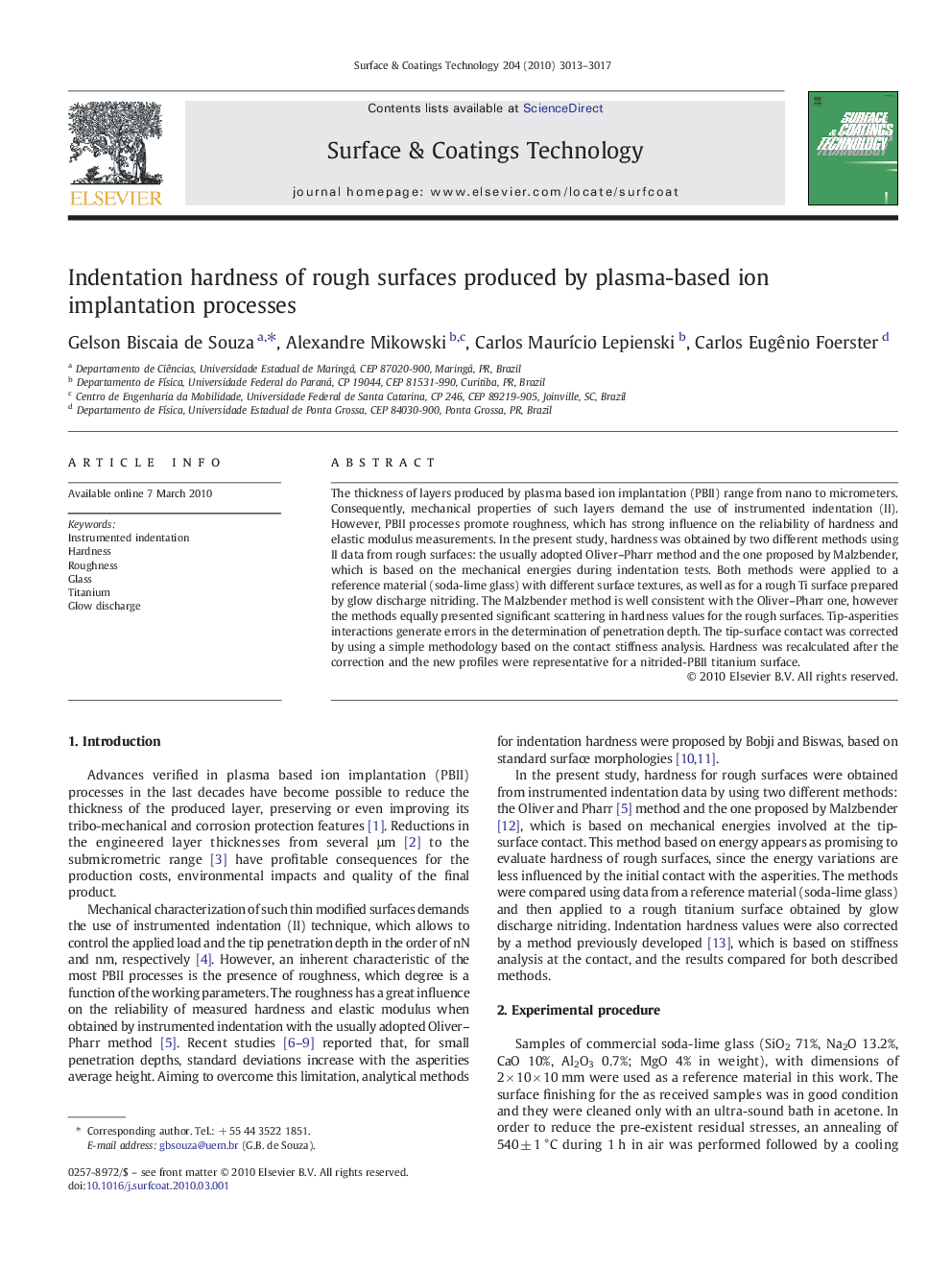| Article ID | Journal | Published Year | Pages | File Type |
|---|---|---|---|---|
| 1659325 | Surface and Coatings Technology | 2010 | 5 Pages |
Abstract
The thickness of layers produced by plasma based ion implantation (PBII) range from nano to micrometers. Consequently, mechanical properties of such layers demand the use of instrumented indentation (II). However, PBII processes promote roughness, which has strong influence on the reliability of hardness and elastic modulus measurements. In the present study, hardness was obtained by two different methods using II data from rough surfaces: the usually adopted Oliver-Pharr method and the one proposed by Malzbender, which is based on the mechanical energies during indentation tests. Both methods were applied to a reference material (soda-lime glass) with different surface textures, as well as for a rough Ti surface prepared by glow discharge nitriding. The Malzbender method is well consistent with the Oliver-Pharr one, however the methods equally presented significant scattering in hardness values for the rough surfaces. Tip-asperities interactions generate errors in the determination of penetration depth. The tip-surface contact was corrected by using a simple methodology based on the contact stiffness analysis. Hardness was recalculated after the correction and the new profiles were representative for a nitrided-PBII titanium surface.
Related Topics
Physical Sciences and Engineering
Materials Science
Nanotechnology
Authors
Gelson Biscaia de Souza, Alexandre Mikowski, Carlos MaurÃcio Lepienski, Carlos Eugênio Foerster,
